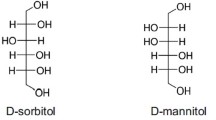Summary
By a special technique indwelling catheters have been placed in the duodenum of rats, permitting some days later the hydration with tritium labelled water in the unanaesthetized animals. The diuresis has been registered by a drop counter, and the activity of the urine was determined by a liquid scintillation counter (Tri-Carb).
After hydration three phases can be well distinguished with respect to the urine activity: 1. distribution, 2. saturation, and 3. elimination. The distribution phase is independent of the given volume but shows some retardation with increasing osmolarity of the fluid used for hydratation.
The activity value during saturation can be used to calculate the water content of the whole body. If the body weight is considered, then dehydration and hyperhydration processes of the organism can be detected.
The elimination of the tritium activity is due to the turnover of water and hence to the drinking habits of the animals; under normal housing and feeding conditions the half time of elimination being 3–4 days.
In relation to water absorption studies from the gut only the insorption process can be analysed by this method.
Zusammenfassung
Weiblichen Albinoratten wird ein Polyäthylen-Dauerkatheter in das Duodenum einoperiert, und nach einigen Tagen Tritium-markiertes Wasser über diesen Katheter zugeführt. Die Tiere sind während der Versuche wach. Die Diurese wird registriert, und die Aktivität zu verschiedenen Zeiten im Urin in einem Flüssigkeits-Szintillationszähler bestimmt.
Nach der Tritiumgabe lassen sich drei Phasen gegeneinander abgrenzen: Verteilung, Sättigung und Ausscheidung.
Die Phase der Verteilung ist von der gegebenen Wassermenge unabhängig, verzögert sich jedoch bei Steigerung der Osmolarität der verabreichten Lösung.
Die Sättigungsphase eignet sich zur Bestimmung des Gesamtkörperwassers (65–75%). Hydrierung und Dehydrierung eines Organismus lassen sich auf diese Weise verfolgen.
Die Ausscheidung des Tritiums und damit der Wasserwechsel sind abhängig vom Trinkverhalten der Tiere. Als Indicator ist die Veränderung der biologischen Halbwertszeit des Tritiums anzusehen, die bei normaler Haltung der Tiere 3 bis 4 Tage beträgt. Für Resorptionsuntersuchungen des Wassers im Darm ist Tritium nur bedingt geeignet. Von den zwei Komponenten der Resorptionsvorgänge läßt sich lediglich die Insorption annähernd erfassen.
Similar content being viewed by others
Literatur
Foy, J. M.: The biological half-life in the mouse, rat, guinea-pig, and rabbit under tropical conditions and the effect of climate and saline-drinking on the biological half-life of HTO in the rat. J. cell. comp. Physiol. 64, 279–282 (1964).
J. M. Foy, and H. Schnieden: Estimation of total body water (virtual tritium space) in the rat, cat, rabbit, guinea-pig and man and of the biological half-life of tritium in man. J. Physiol. (Lond.) 154, 169–176 (1960).
Haigh, C. P., and H. Schnieden: Virtual deuterium space (total body water) in normal and protein-deficient rats. J. cell. comp. Physiol. 131, 377–382 (1956).
Heidenhain, R.: Beiträge zur Histologie und Physiologie der Dünndarmschleimhaut. Pflügers Arch. ges. Physiol. 43 (1888) Suppl.
Herzer, R., u. F. J. Haberich: Aufnahme und Ausscheidung von Tritium-markiertem Wasser an wachen Ratten. Pflügers Arch. ges. Physiol. 289, R 88 (1966).
Hevesy, G., and R. Hofer: Elimination of water from the human body. Nature (Lond.) 133, 495–496 (1933); 134, 879 (1934).
Lister, J.: Body water estimation in the newborn using triated water. J. Arch. Dis. Childh. 37, 195–197 (1962).
Pace, N., L. Kline, H. K. Schackman, and M. Harfenist: Studies on body water composition. IV. Use of radioactive hydrogen for measurement in vivo of total body water. J. biol. Chem. 168, 459–469 (1947).
Paerisch, M.: Body water determination in man by tritium. Pflügers Arch. ges. Physiol. 281, 374–378 (1964).
Pinson, E. A.: Water exchanges and barriers as studied by the use of hydrogen isotopes. Physiol. Rev. 32, 123–134 (1952).
--, and E. C. Anderson: The body absorption, distribution, and excretion of tritium in man and animals. Los Alamos Scientific Laboratory Report LA 1218 (1952).
E. A. Pinson, and W. H. Langham: Physiology and toxicology of tritium in man. J. appl. Physiol. 10, 108–126 (1957).
Thompson, R. C.: Studies of metabolic turnover with tritium as a tracer. II. Gross studies in the rat. J. biol. Chem. 200, 731–742 (1953).
Visscher, M. B., E. S. Fetcher jr., C. W. Carr, H. P. Gregor, M. S. Bushey, and D. E. Barker: Isotopic tracer studies on the movement of water and ions between intestinal lumen and blood. Amer. J. Physiol. 142, 550–557 (1944).
Visscher, M. B., and R. R. Roepke: Osmotic and electrolyte relationships of concentration during absorption of salt solutions from ileal segments. Amer. J. Physiol. 144, 468–476 (1945).
R. R. Roepke and N. Lifson: Osmotic and electrolyte concentration relations during the absorption of autogenous serum from ileal segments. Amer. J. Physiol. 144, 457–463 (1945).
— R. H. Varco, C. W. Carr, R. B. Dean, and D. Erickson: Sodium ion movement between the intestinal lumen and the blood. Amer. J. Physiol. 141, 488 bis 505 (1944).
Wenzel, M., u. P. E. Schulze: Tritium-Markierung. Monographie. Berlin: W. de Gruyter 1962.
Author information
Authors and Affiliations
Additional information
Die Untersuchungen wurden durch die Deutsche Forschungsgemeinschaft und den Research Grant AF EOAR 65–63 der US Air Force, Brüssel Office, unterstützt.
Rights and permissions
About this article
Cite this article
Herzer, R., Haberich, F.J. Enterale Aufnahme und renale Ausscheidung von Tritium-markiertem Wasser bei wachen Ratten. Pflügers Archiv 292, 277–287 (1966). https://doi.org/10.1007/BF00363196
Received:
Issue Date:
DOI: https://doi.org/10.1007/BF00363196



